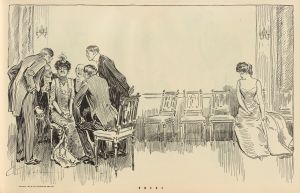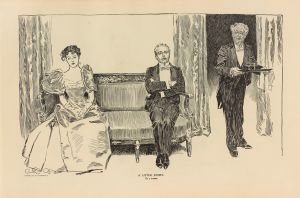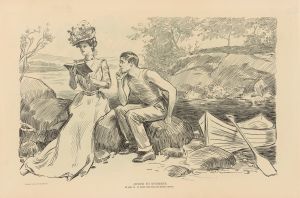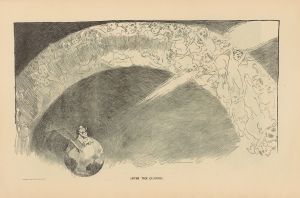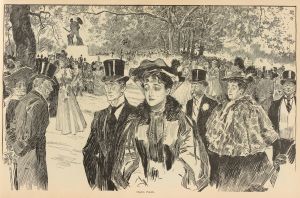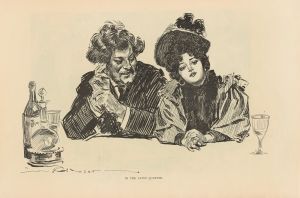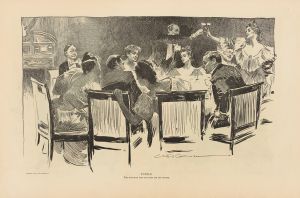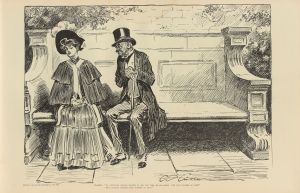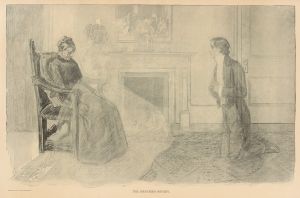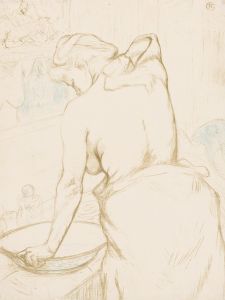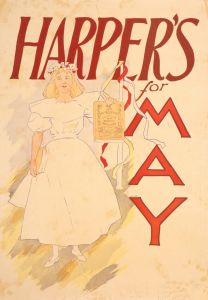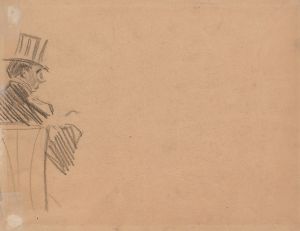
Out of his class
A hand-painted replica of Charles Dana Gibson’s masterpiece Out of his class, meticulously crafted by professional artists to capture the true essence of the original. Each piece is created with museum-quality canvas and rare mineral pigments, carefully painted by experienced artists with delicate brushstrokes and rich, layered colors to perfectly recreate the texture of the original artwork. Unlike machine-printed reproductions, this hand-painted version brings the painting to life, infused with the artist’s emotions and skill in every stroke. Whether for personal collection or home decoration, it instantly elevates the artistic atmosphere of any space.
Charles Dana Gibson was an influential American illustrator best known for his creation of the "Gibson Girl," a representation of the idealized American woman at the turn of the 20th century. His work was widely published in magazines such as Life, Harper's Weekly, and Scribner's, making him one of the most prominent illustrators of his time. Among his many works is the illustration titled "Out of His Class."
"Out of His Class" is a black-and-white illustration that showcases Gibson's characteristic style, which combines detailed line work with a keen eye for social commentary. The illustration typically features a scene that captures the social dynamics and gender roles of the late 19th and early 20th centuries. Gibson's work often highlighted the contrasts between different social classes and the evolving roles of men and women in society.
The illustration "Out of His Class" depicts a young man and a woman, with the man appearing somewhat out of place or uncomfortable, suggesting a social or class disparity between the two. This theme is consistent with Gibson's broader body of work, which frequently explored the tensions and interactions between different social strata. The "Gibson Girl" in this illustration embodies the confidence and poise that were hallmarks of Gibson's female characters, often portrayed as independent and self-assured.
Gibson's illustrations were not just artistic expressions but also commentaries on the societal norms and expectations of his time. The "Gibson Girl" became a cultural icon, representing a new kind of American woman who was both fashionable and assertive. This figure was often juxtaposed with male characters who were either enamored with or intimidated by her presence, reflecting the shifting dynamics of gender relations during this period.
The popularity of Gibson's work, including "Out of His Class," can be attributed to its resonance with contemporary audiences who were witnessing significant social changes. The late 19th and early 20th centuries were a time of transformation in the United States, with increasing urbanization, the rise of the middle class, and the early stages of the women's suffrage movement. Gibson's illustrations captured these changes with wit and insight, making them both entertaining and thought-provoking.
While specific details about the publication history or reception of "Out of His Class" may not be extensively documented, it remains an example of Gibson's ability to encapsulate the spirit of his era through art. His work continues to be studied for its artistic merit and its reflection of the cultural and social dynamics of the time. Charles Dana Gibson's legacy as an illustrator endures, with his "Gibson Girl" and related works remaining iconic representations of early 20th-century American society.







